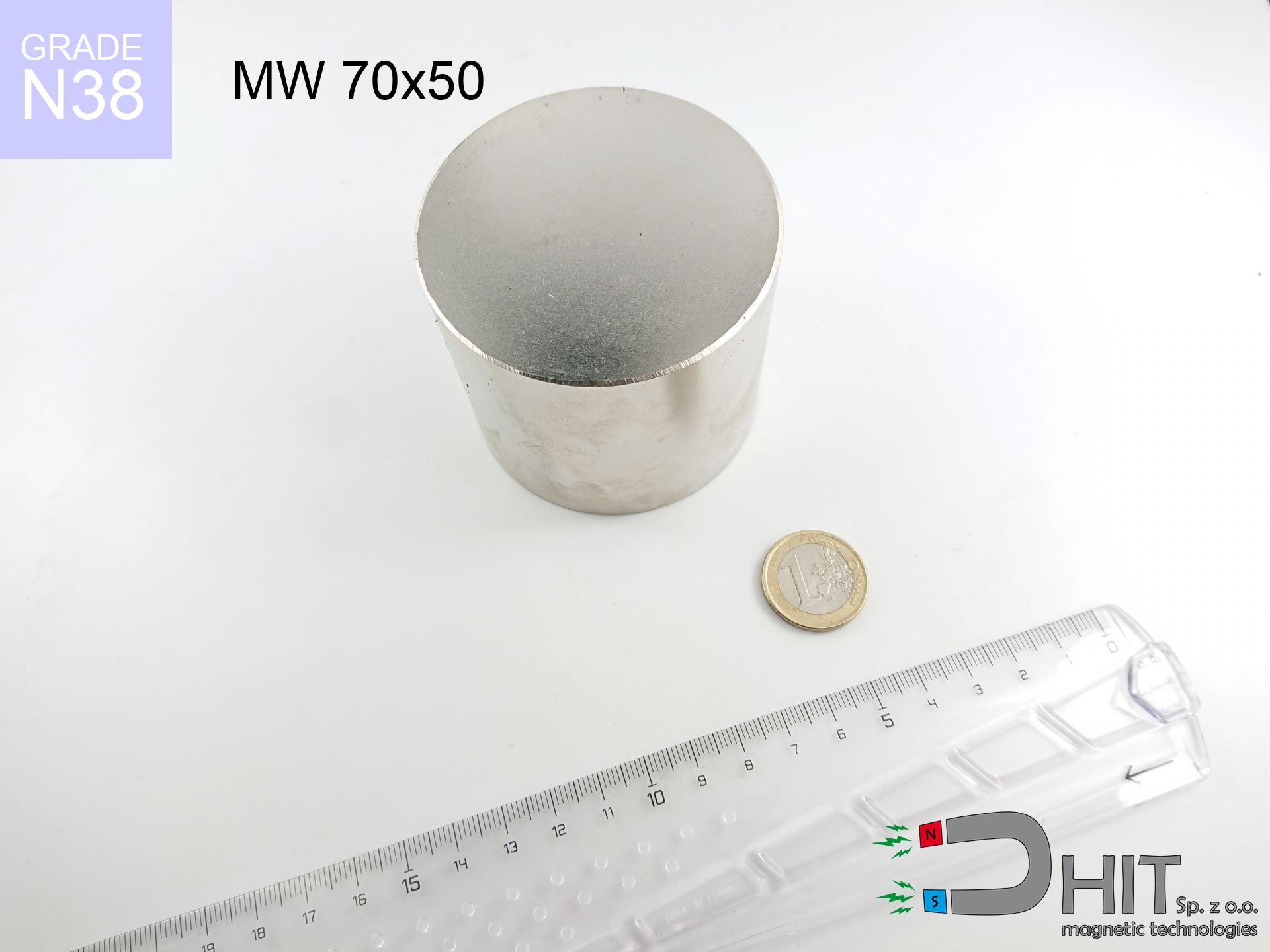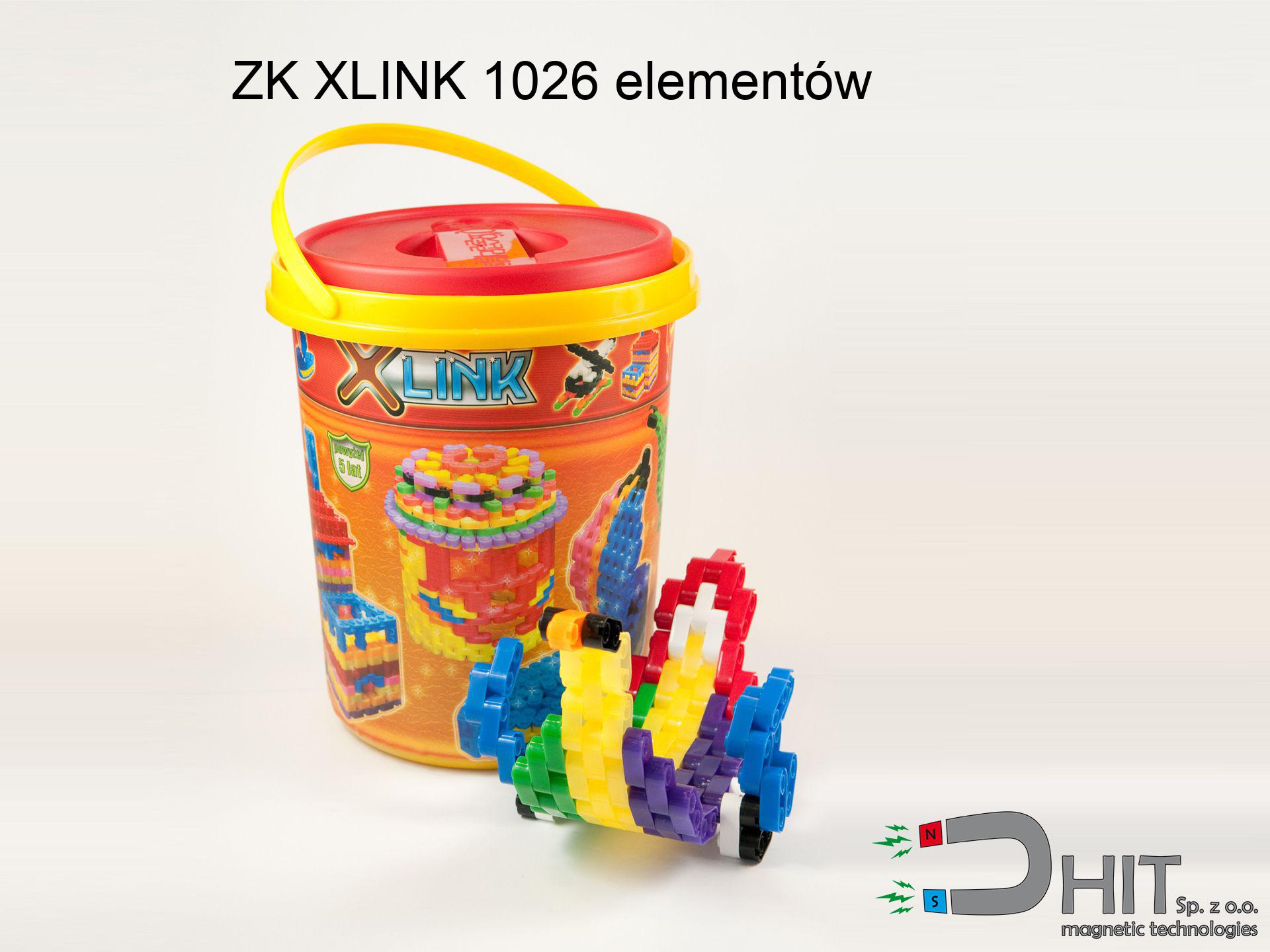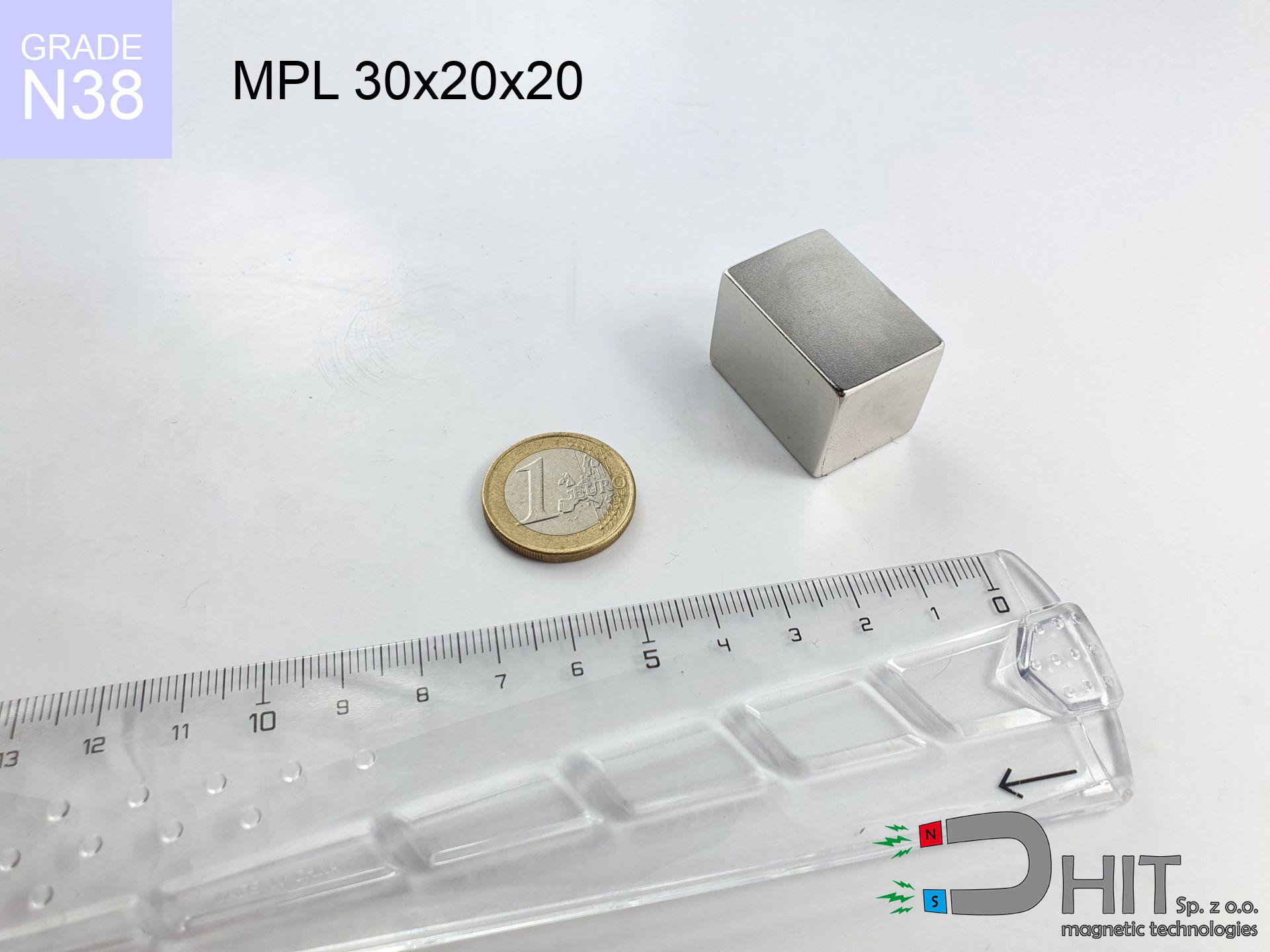UMP 94x40 [3xM10] GW F550 Silver Black / N52 - search holder
search holder
Catalog no 210490
GTIN/EAN: 5906301814146
Diameter Ø
94 mm [±1 mm]
Height
40 mm [±1 mm]
Weight
2262 g
Magnetization Direction
↑ axial
Load capacity
650.00 kg / 6374.32 N
Coating
[Epoxy] Epoxy
Magnetic Flux
~ 11 000 Gauss [±5%]
350.00 ZŁ with VAT / pcs + price for transport
284.55 ZŁ net + 23% VAT / pcs
bulk discounts:
Need more?
Contact us by phone
+48 888 99 98 98
otherwise send us a note via
our online form
the contact section.
Strength along with form of a magnet can be calculated with our
power calculator.
Order by 14:00 and we’ll ship today!
💡 Check why professionals choose Dhit over cheap substitutes
Instead of believing fairy tales on YouTube with tests on uncertified equipment, see what really determines your magnet's power:
- 📏 Magnet thickness in the casing (min. 10mm) – This is what matters most! Thin magnets are weak. Thanks to the 1cm thickness of N52 neodymium, your magnet "sees" metal even through thick rust and mud.
- 🛡️ Armored protection (Black Epoxy) – Forget about rust. This coating doesn't chip when hitting rocks and protects the magnet in water much better than regular nickel, which fails quickly.
- 🧲 Eyelets that don't steal power – Made of special non-magnetic steel, so they don't stick to the magnet and don't block the force. Important: mount only one eyelet at a time! Using 3 at once is a mistake that weakens the magnet.
- 🧶 Certified rope (min. 8mm) – You gain the certainty that your gear won't stay at the bottom. It's thick and comfortable, so it doesn't cut your fingers when pulling out heavy scrap metal.
- 🚀 Our advantage: We are the only ones combining the strongest N52 neodymium (10mm thick) with non-magnetic eyelets. This is real power and durability you won't find anywhere else.
Invest in solid equipment and enjoy the results!
Technical details - UMP 94x40 [3xM10] GW F550 Silver Black / N52 - search holder
Specification / characteristics - UMP 94x40 [3xM10] GW F550 Silver Black / N52 - search holder
| properties | values |
|---|---|
| Cat. no. | 210490 |
| GTIN/EAN | 5906301814146 |
| Production/Distribution | Dhit sp. z o.o. |
| Country of origin | Poland / China / Germany |
| Customs code | 85059029 |
| Diameter Ø | 94 mm [±1 mm] |
| Height | 40 mm [±1 mm] |
| Weight | 2262 g |
| Magnetization Direction | ↑ axial |
| Load capacity ~ ? | 650.00 kg / 6374.32 N |
| Coating | [Epoxy] Epoxy |
| Series | SilverBlack |
| Holder Type | 2 sided |
| Material Type | Structural steel S235 (ferrous) |
| Magnetic Flux | ~ 11 000 Gauss [±5%] |
| Size/Mount Quantity | 3xM10 |
| Manufacturing Tolerance | ±1 mm |
Magnetic properties of material N52
| properties | values | units |
|---|---|---|
| remenance Br [min. - max.] ? | 14.2-14.7 | kGs |
| remenance Br [min. - max.] ? | 1420-1470 | mT |
| coercivity bHc ? | 10.8-12.5 | kOe |
| coercivity bHc ? | 860-995 | kA/m |
| actual internal force iHc | ≥ 12 | kOe |
| actual internal force iHc | ≥ 955 | kA/m |
| energy density [min. - max.] ? | 48-53 | BH max MGOe |
| energy density [min. - max.] ? | 380-422 | BH max KJ/m |
| max. temperature ? | ≤ 80 | °C |
Physical properties of sintered neodymium magnets Nd2Fe14B at 20°C
| properties | values | units |
|---|---|---|
| Vickers hardness | ≥550 | Hv |
| Density | ≥7.4 | g/cm3 |
| Curie Temperature TC | 312 - 380 | °C |
| Curie Temperature TF | 593 - 716 | °F |
| Specific resistance | 150 | μΩ⋅cm |
| Bending strength | 250 | MPa |
| Compressive strength | 1000~1100 | MPa |
| Thermal expansion parallel (∥) to orientation (M) | (3-4) x 10-6 | °C-1 |
| Thermal expansion perpendicular (⊥) to orientation (M) | -(1-3) x 10-6 | °C-1 |
| Young's modulus | 1.7 x 104 | kg/mm² |
Material specification
| iron (Fe) | 64% – 68% |
| neodymium (Nd) | 29% – 32% |
| boron (B) | 1.1% – 1.2% |
| dysprosium (Dy) | 0.5% – 2.0% |
| coating (Ni-Cu-Ni) | < 0.05% |
Environmental data
| recyclability (EoL) | 100% |
| recycled raw materials | ~10% (pre-cons) |
| carbon footprint | low / zredukowany |
| waste code (EWC) | 16 02 16 |
Check out also products
Pros as well as cons of rare earth magnets.
Pros
- They do not lose strength, even after approximately ten years – the decrease in lifting capacity is only ~1% (according to tests),
- Neodymium magnets remain exceptionally resistant to loss of magnetic properties caused by external magnetic fields,
- A magnet with a metallic nickel surface has an effective appearance,
- Magnets exhibit maximum magnetic induction on the surface,
- Thanks to resistance to high temperature, they are capable of working (depending on the shape) even at temperatures up to 230°C and higher...
- Thanks to versatility in designing and the capacity to modify to specific needs,
- Versatile presence in modern industrial fields – they are used in magnetic memories, drive modules, medical equipment, and complex engineering applications.
- Relatively small size with high pulling force – neodymium magnets offer high power in tiny dimensions, which makes them useful in miniature devices
Weaknesses
- Susceptibility to cracking is one of their disadvantages. Upon strong impact they can break. We recommend keeping them in a special holder, which not only secures them against impacts but also increases their durability
- Neodymium magnets lose force when exposed to high temperatures. After reaching 80°C, many of them experience permanent drop of power (a factor is the shape and dimensions of the magnet). We offer magnets specially adapted to work at temperatures up to 230°C marked [AH], which are extremely resistant to heat
- When exposed to humidity, magnets start to rust. To use them in conditions outside, it is recommended to use protective magnets, such as those in rubber or plastics, which secure oxidation as well as corrosion.
- Limited possibility of making nuts in the magnet and complicated forms - preferred is a housing - magnetic holder.
- Possible danger to health – tiny shards of magnets are risky, in case of ingestion, which becomes key in the context of child safety. It is also worth noting that small elements of these magnets can be problematic in diagnostics medical after entering the body.
- With large orders the cost of neodymium magnets can be a barrier,
Pull force analysis
Breakaway strength of the magnet in ideal conditions – what it depends on?
- with the use of a yoke made of special test steel, guaranteeing maximum field concentration
- possessing a massiveness of minimum 10 mm to avoid saturation
- with an ideally smooth contact surface
- with zero gap (without coatings)
- for force applied at a right angle (in the magnet axis)
- at temperature approx. 20 degrees Celsius
Practical aspects of lifting capacity – factors
- Gap between magnet and steel – even a fraction of a millimeter of distance (caused e.g. by varnish or unevenness) drastically reduces the magnet efficiency, often by half at just 0.5 mm.
- Direction of force – maximum parameter is available only during perpendicular pulling. The force required to slide of the magnet along the plate is typically several times lower (approx. 1/5 of the lifting capacity).
- Plate thickness – too thin plate causes magnetic saturation, causing part of the power to be wasted into the air.
- Material composition – not every steel reacts the same. Alloy additives weaken the interaction with the magnet.
- Smoothness – full contact is obtained only on polished steel. Rough texture create air cushions, reducing force.
- Thermal environment – heating the magnet results in weakening of induction. It is worth remembering the maximum operating temperature for a given model.
Holding force was measured on the plate surface of 20 mm thickness, when a perpendicular force was applied, whereas under attempts to slide the magnet the holding force is lower. Additionally, even a small distance between the magnet and the plate lowers the lifting capacity.
H&S for magnets
Fire risk
Powder generated during machining of magnets is combustible. Do not drill into magnets without proper cooling and knowledge.
GPS and phone interference
Be aware: neodymium magnets produce a field that confuses precision electronics. Keep a separation from your mobile, tablet, and GPS.
Do not give to children
These products are not intended for children. Accidental ingestion of several magnets can lead to them pinching intestinal walls, which constitutes a critical condition and requires urgent medical intervention.
Allergy Warning
Allergy Notice: The nickel-copper-nickel coating contains nickel. If redness occurs, immediately stop working with magnets and wear gloves.
Health Danger
Individuals with a ICD have to maintain an absolute distance from magnets. The magnetism can disrupt the operation of the implant.
Handling rules
Before use, read the rules. Uncontrolled attraction can destroy the magnet or hurt your hand. Be predictive.
Threat to electronics
Intense magnetic fields can erase data on payment cards, hard drives, and storage devices. Maintain a gap of at least 10 cm.
Fragile material
NdFeB magnets are sintered ceramics, meaning they are fragile like glass. Clashing of two magnets leads to them shattering into shards.
Maximum temperature
Standard neodymium magnets (grade N) lose power when the temperature exceeds 80°C. Damage is permanent.
Bodily injuries
Pinching hazard: The pulling power is so immense that it can cause blood blisters, crushing, and broken bones. Use thick gloves.

![Fishing magnet UMP 94x40 [3xM10] GW F550 Silver Black / N52 - GOLD Series Fishing magnet UMP 94x40 [3xM10] GW F550 Silver Black / N52 - GOLD Series](https://cdn3.dhit.pl/graphics/banners/magnet.webp)
![UMP 94x40 [3xM10] GW F550 Silver Black / N52 - search holder](https://cdn3.dhit.pl/graphics/products/ump-94x40-3xm10-gw-f550-fad.jpg)
![UMP 94x40 [3xM10] GW F550 Silver Black / N52 - search holder - ujęcie 2](https://cdn3.dhit.pl/graphics/products/ump-94x40-3xm10-gw-f550-zul.jpg)
![UMP 94x40 [3xM10] GW F550 Silver Black / N52 - search holder - ujęcie 3](https://cdn3.dhit.pl/graphics/products/ump-94x40-3xm10-gw-f550-toh.jpg)





